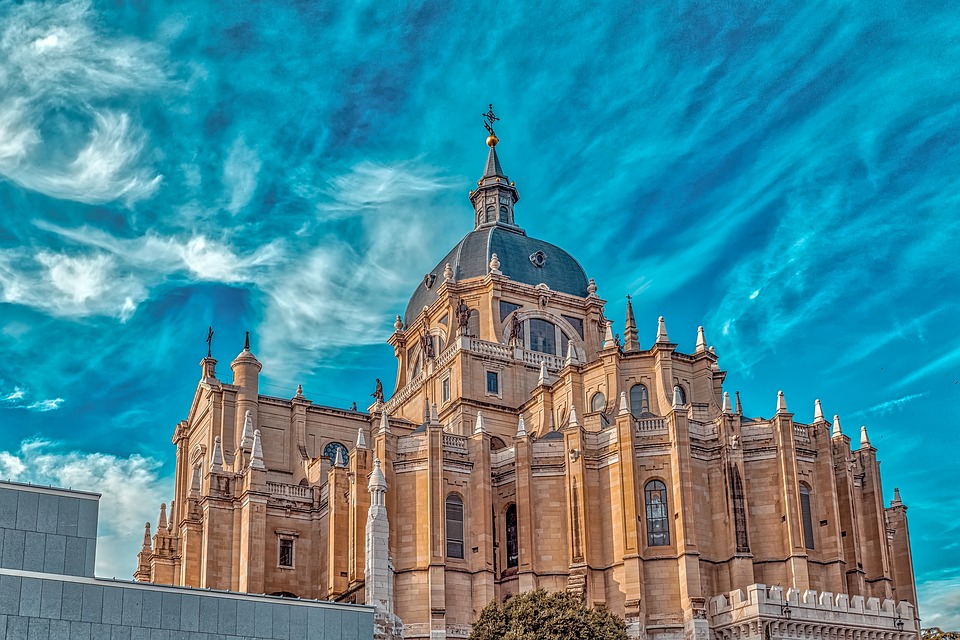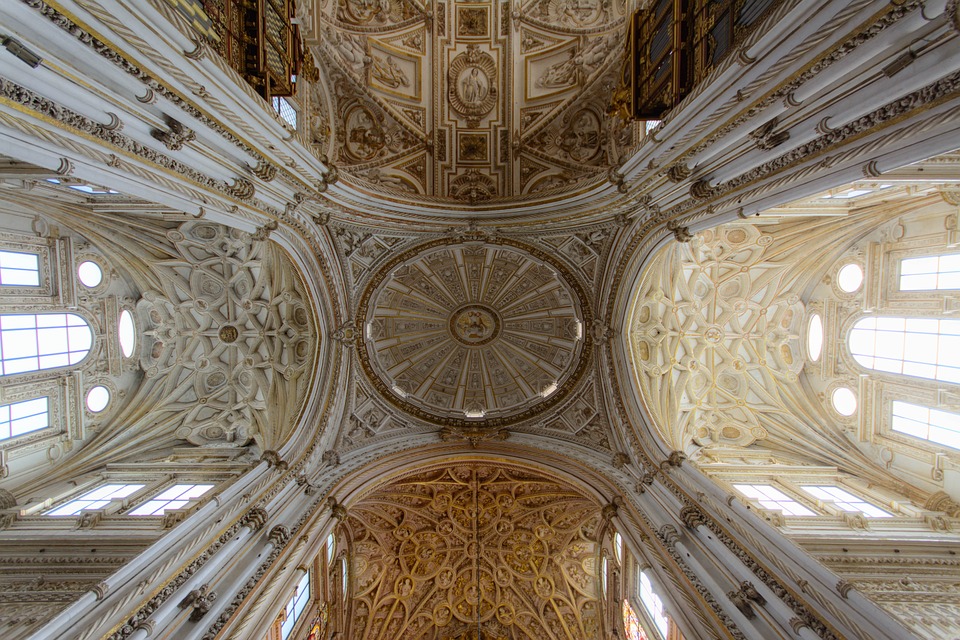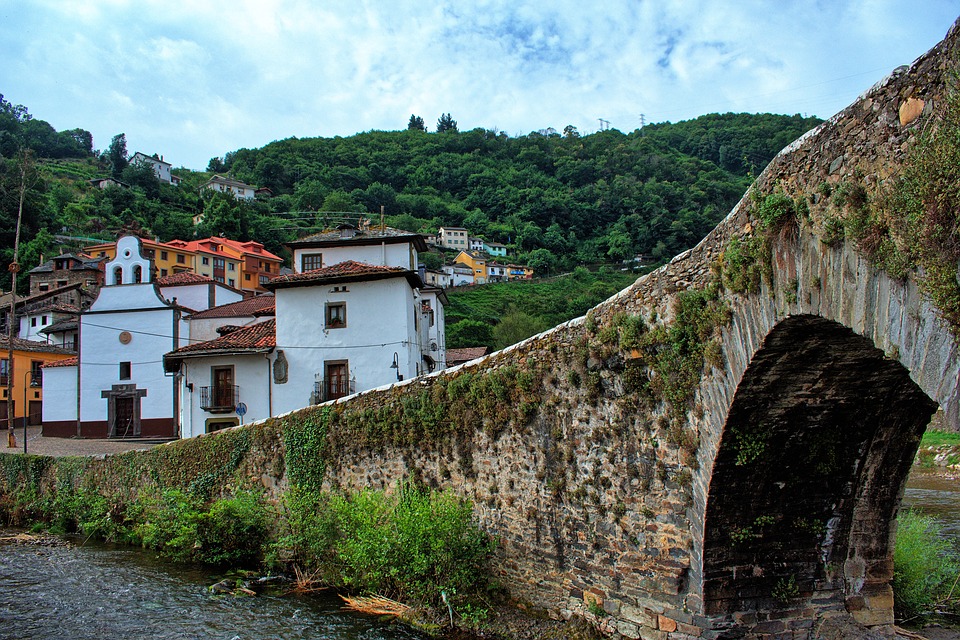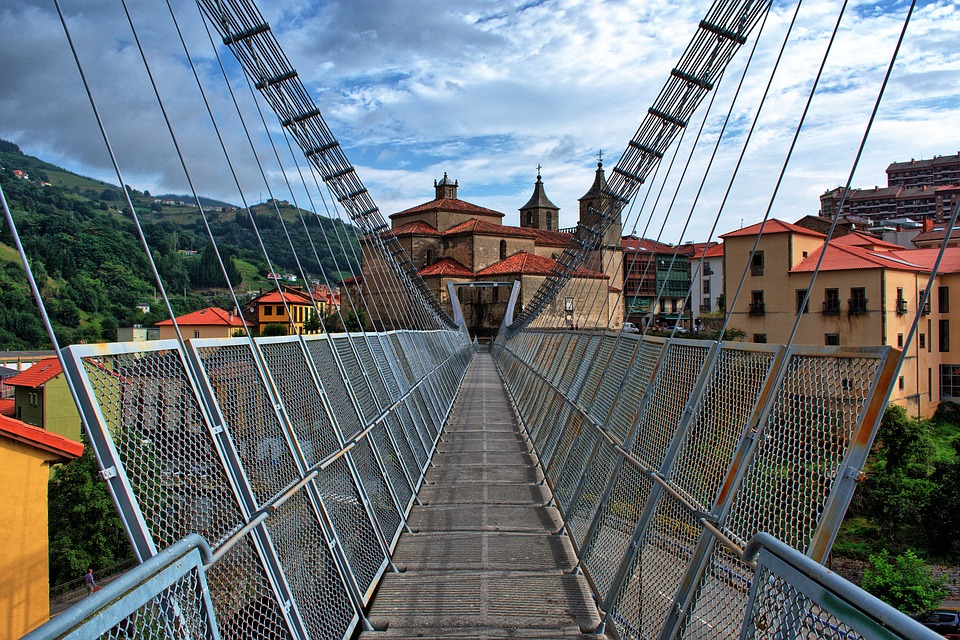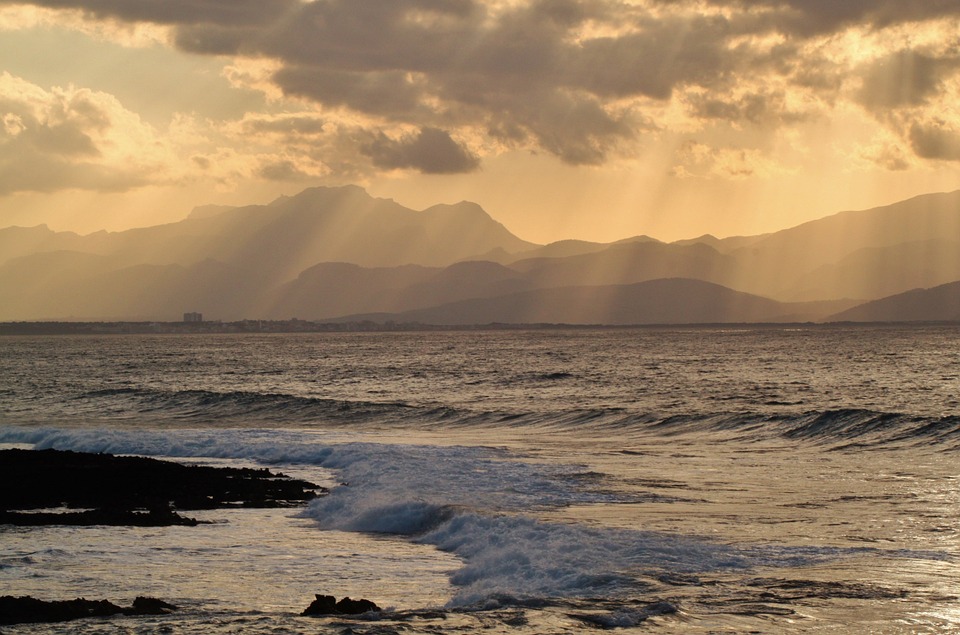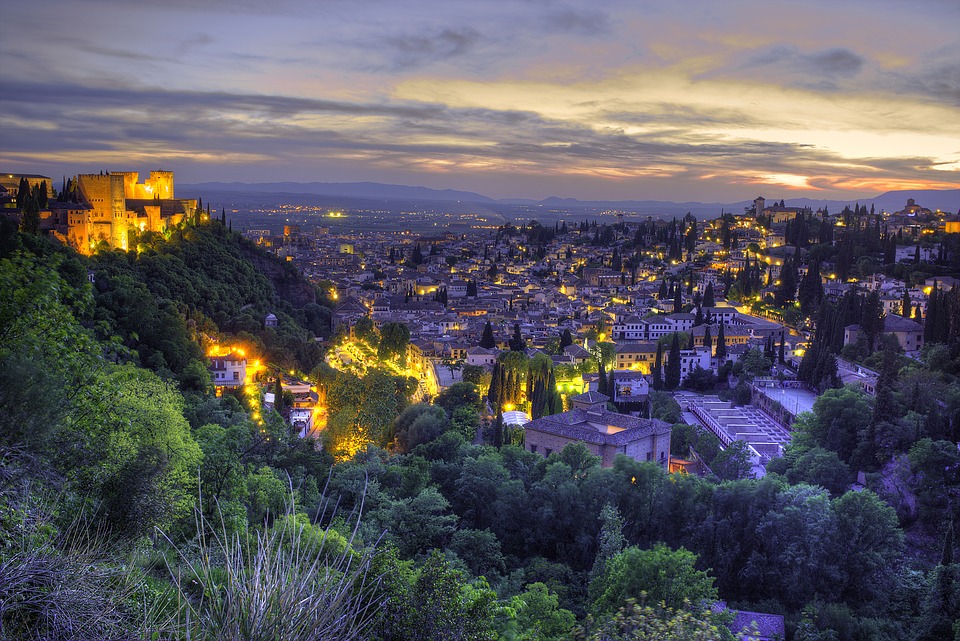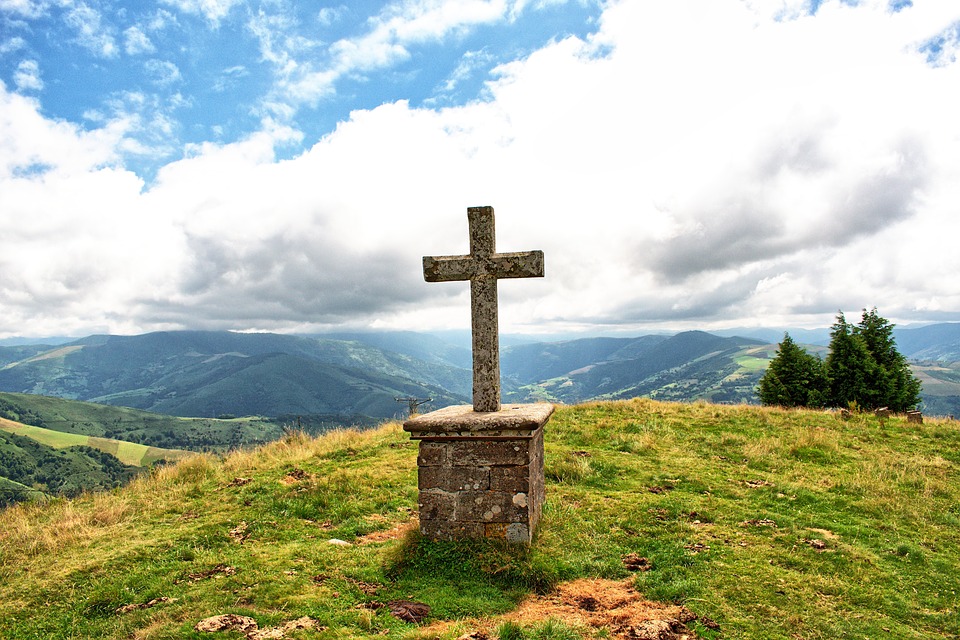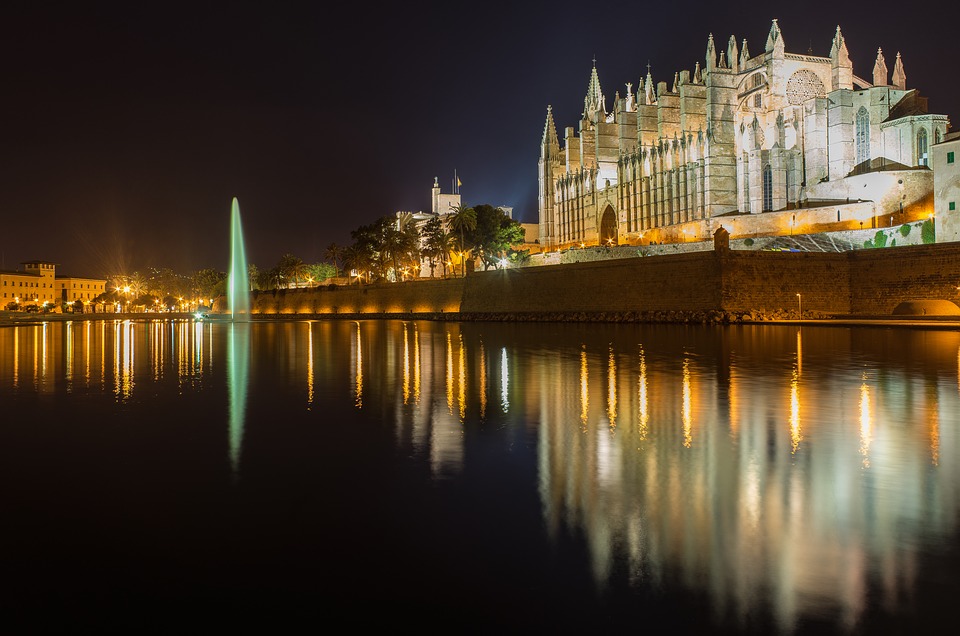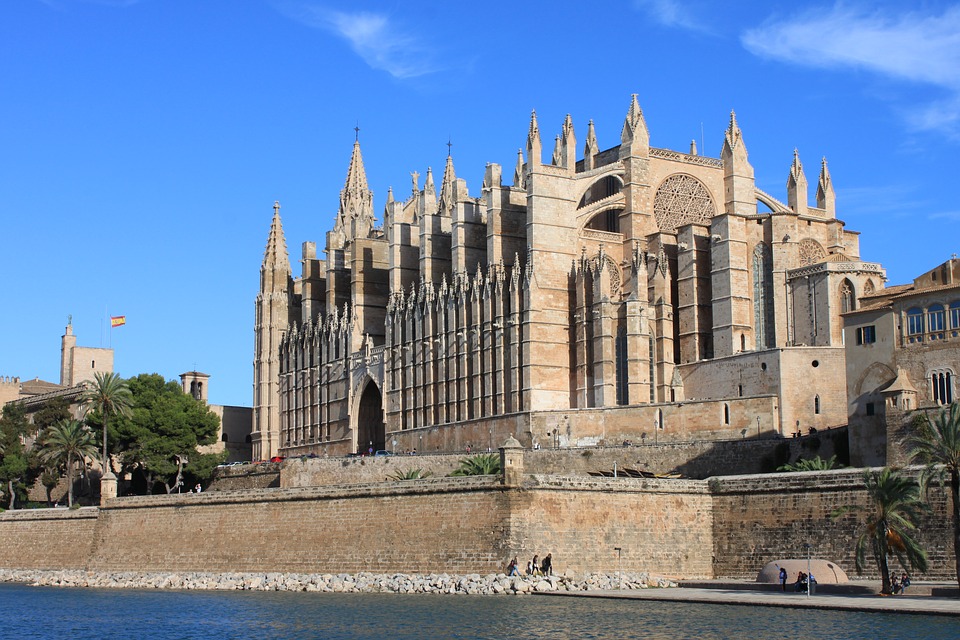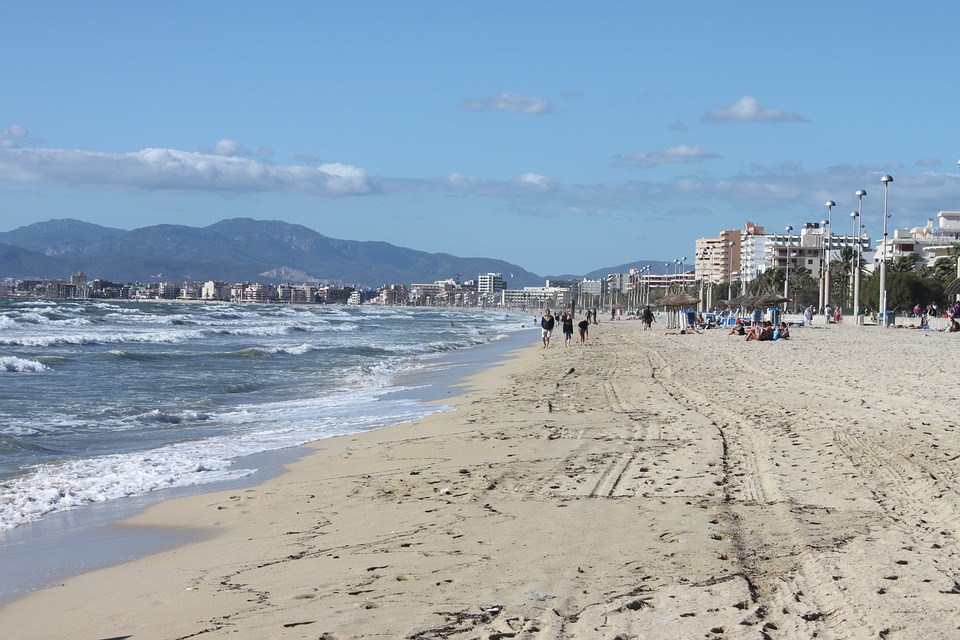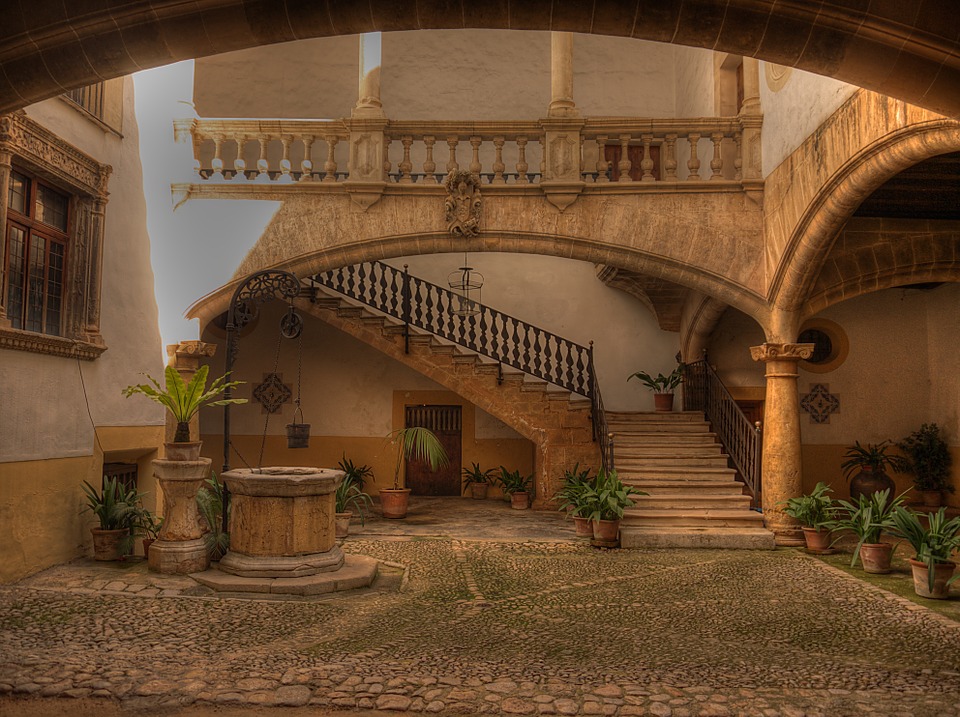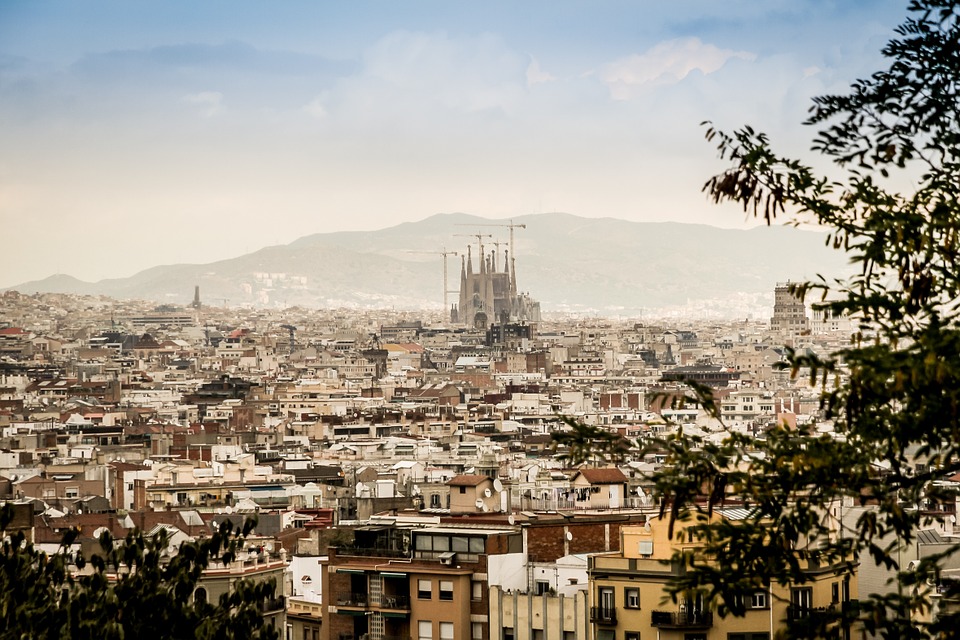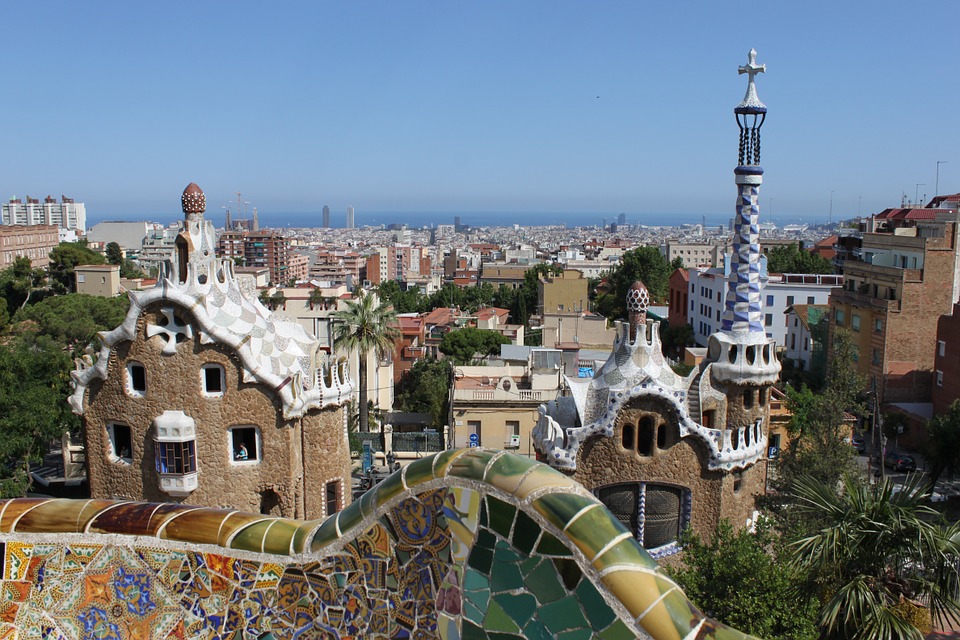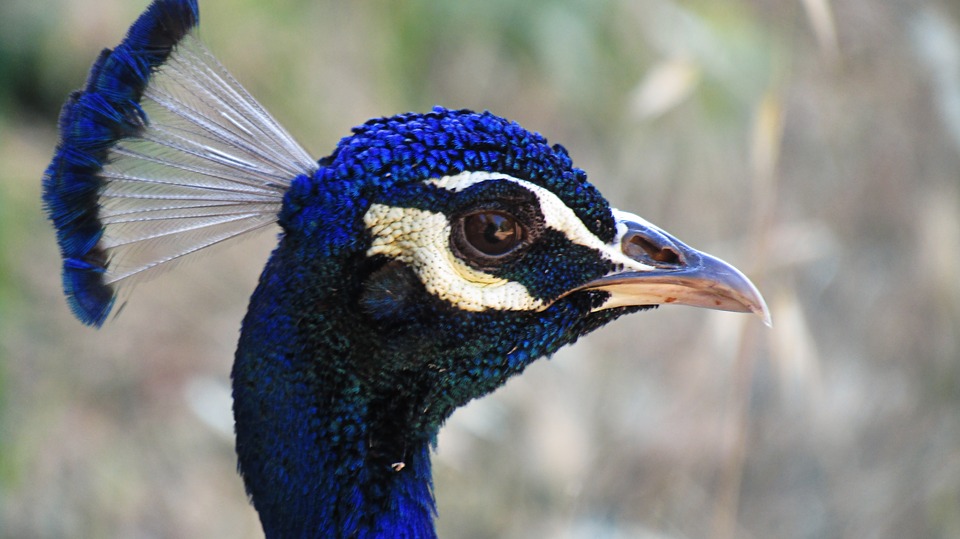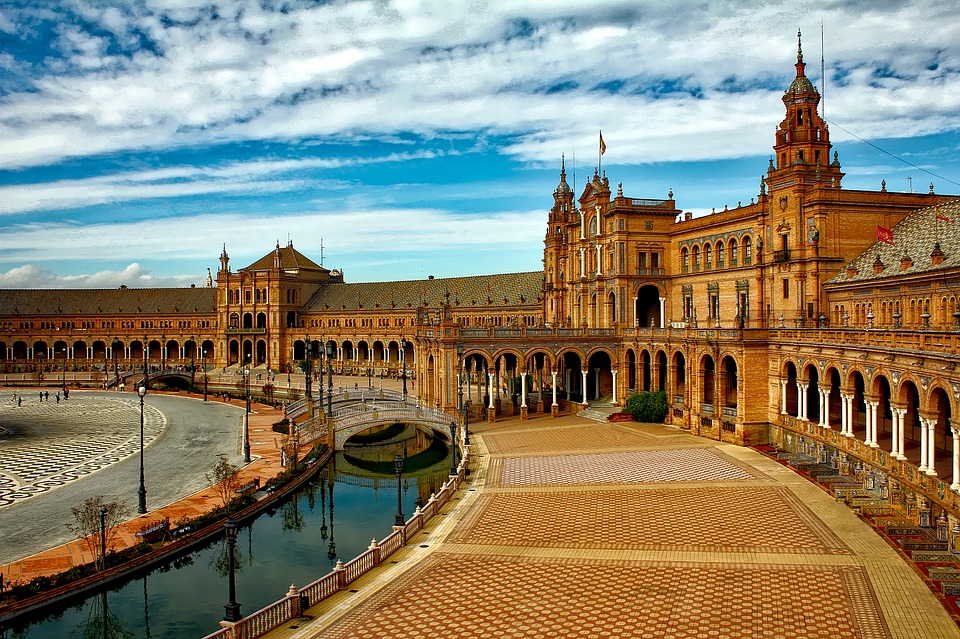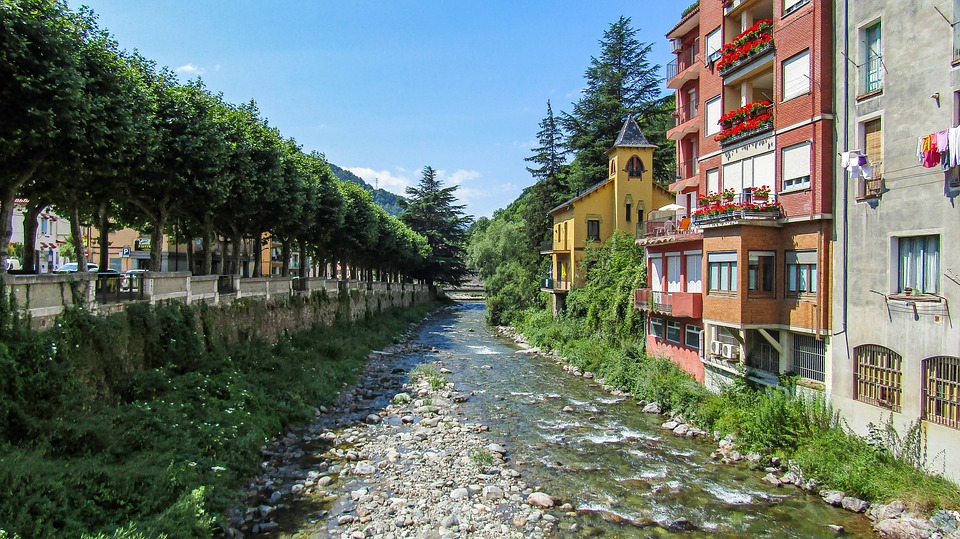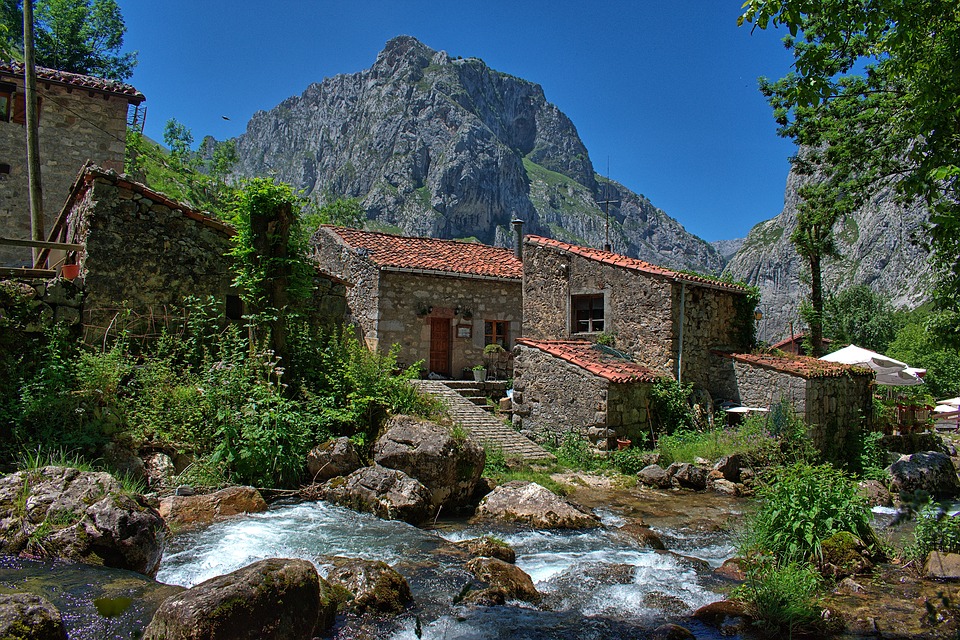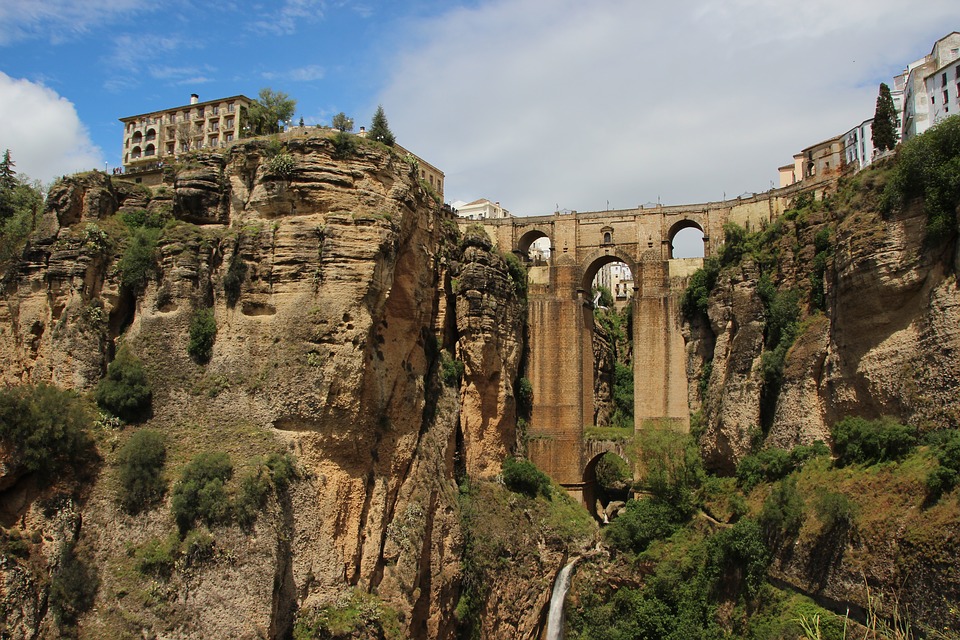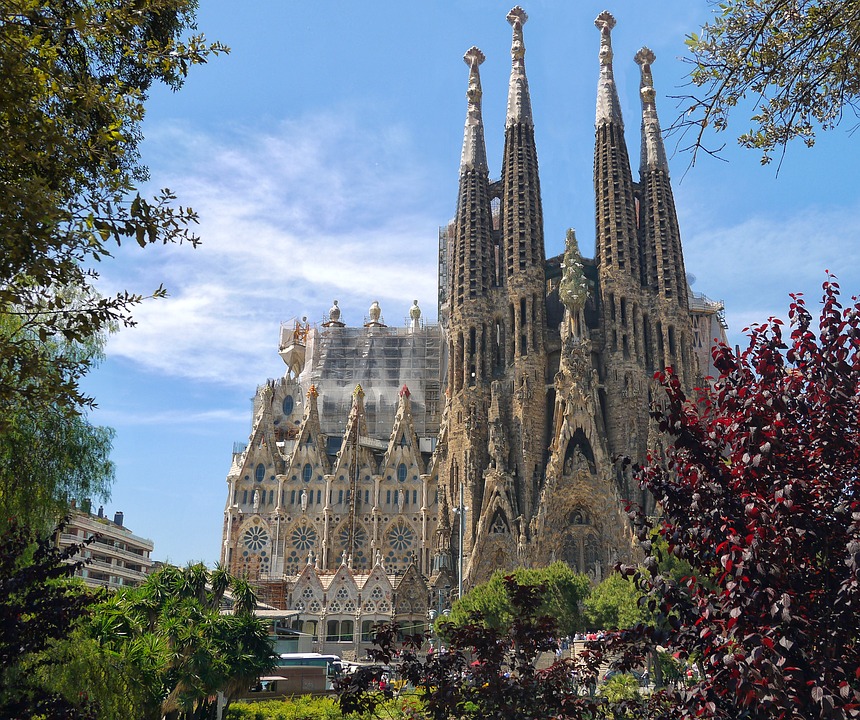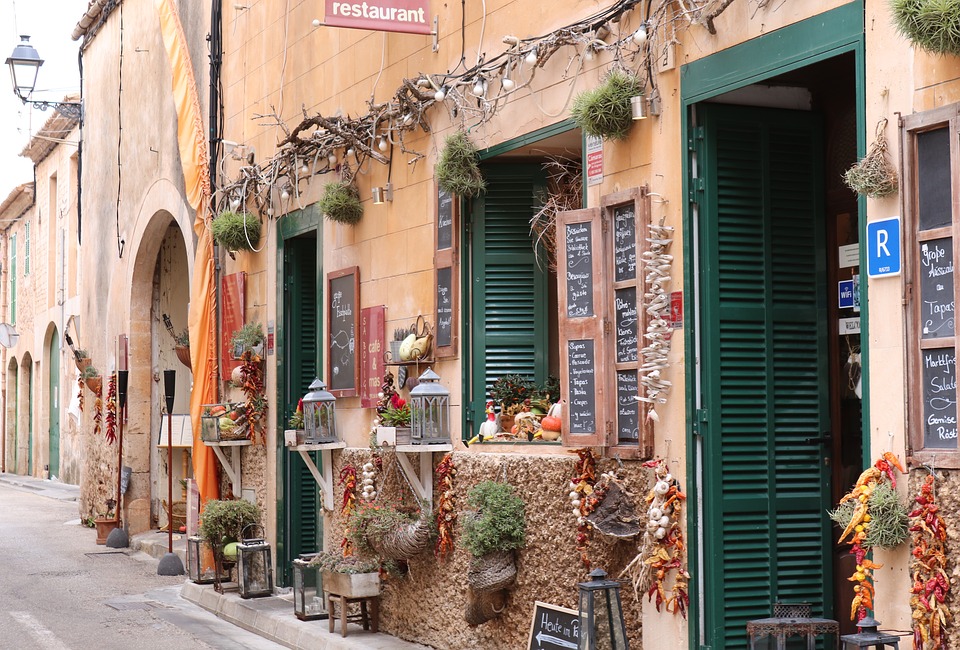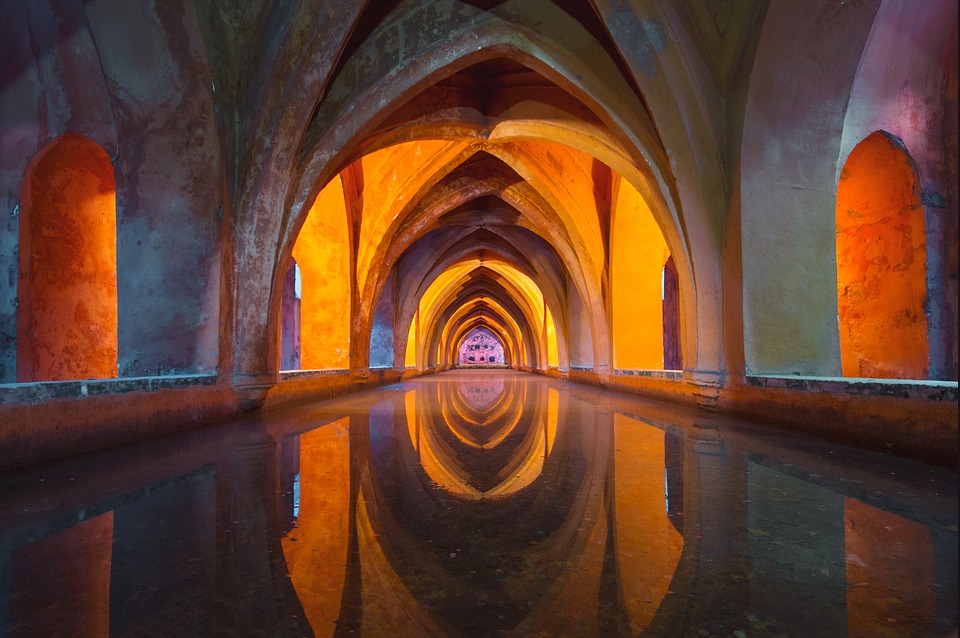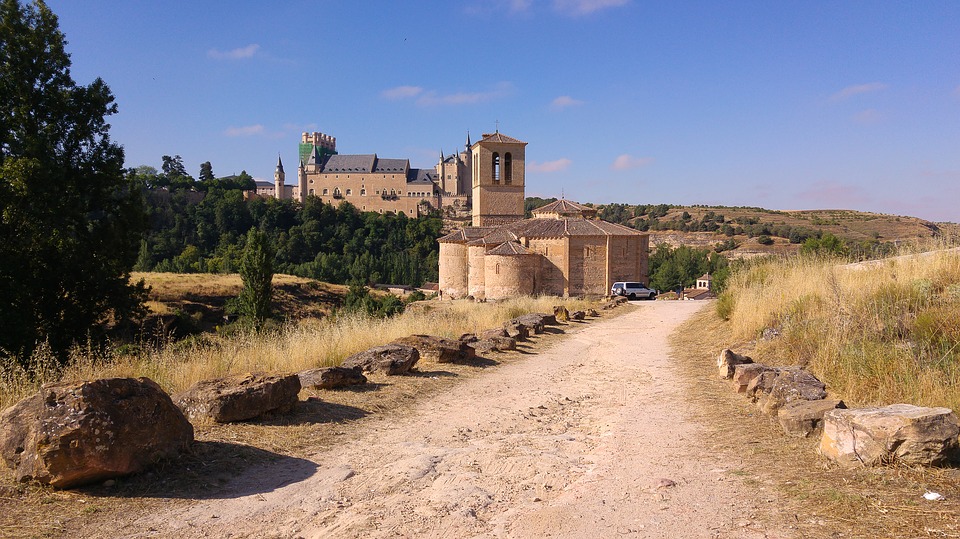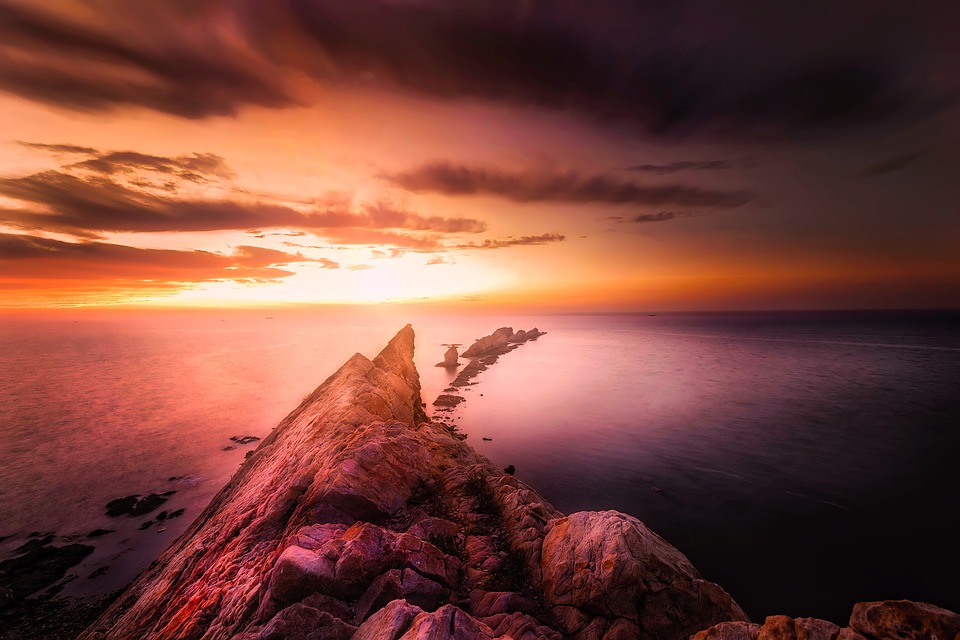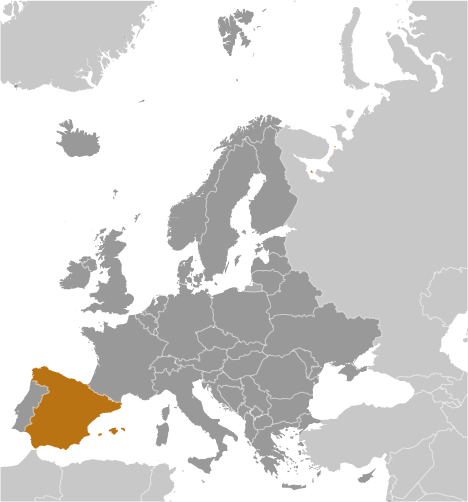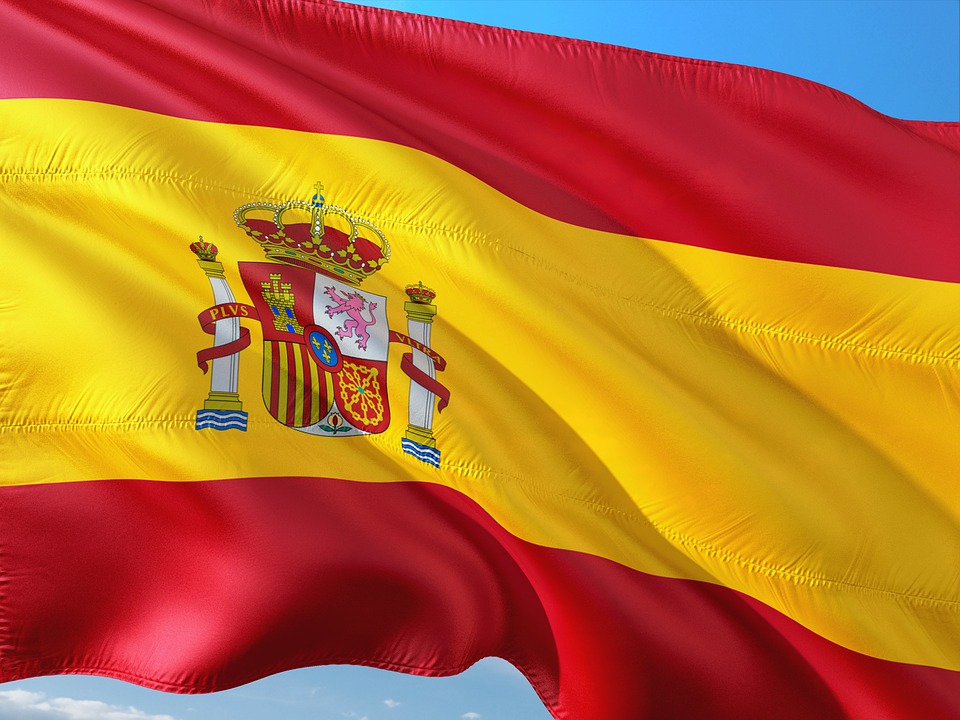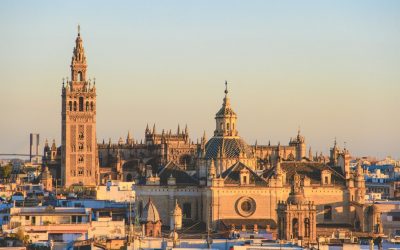Spain
(Reino de España (Kingdom of Spain))

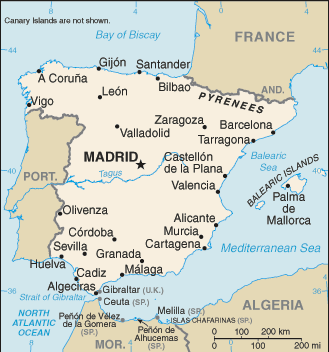
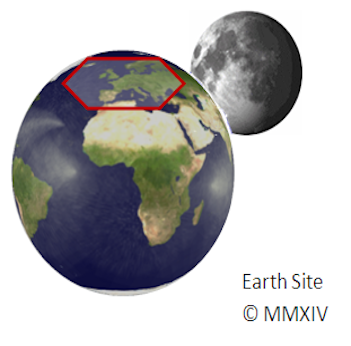
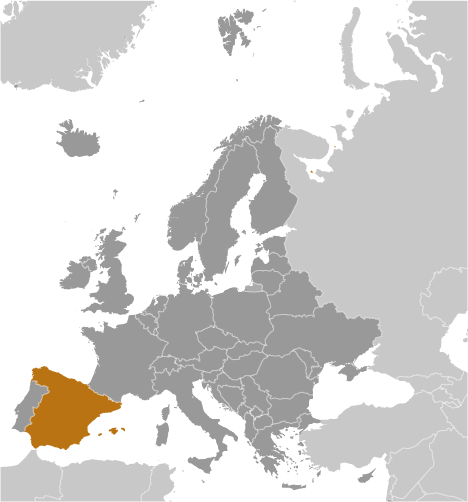
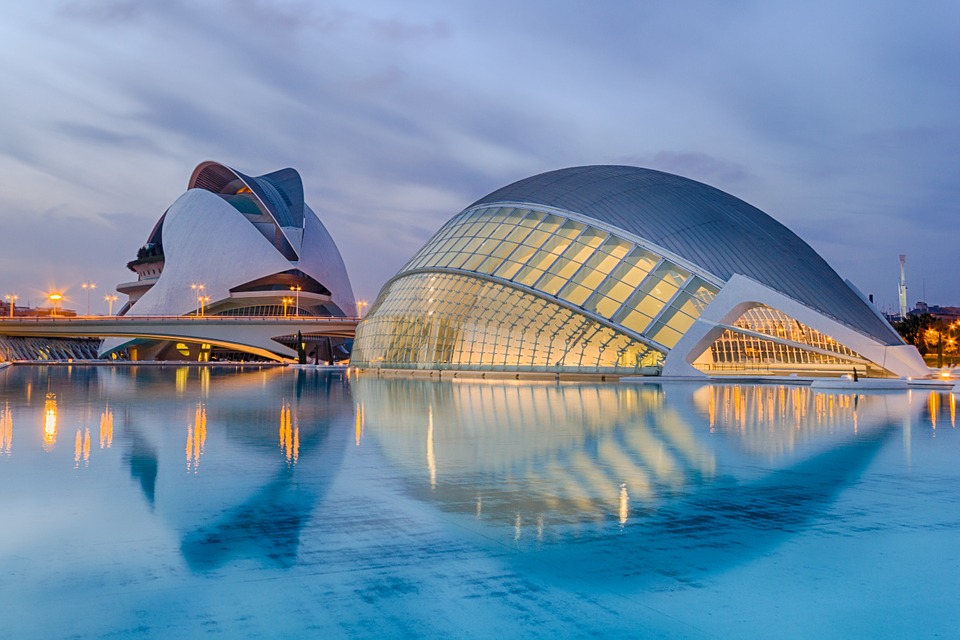
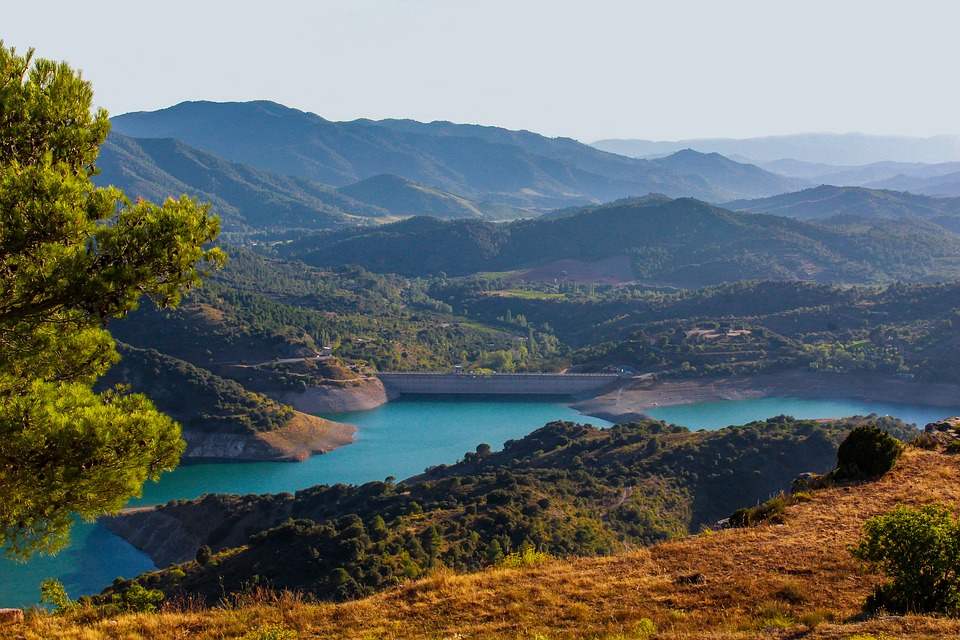

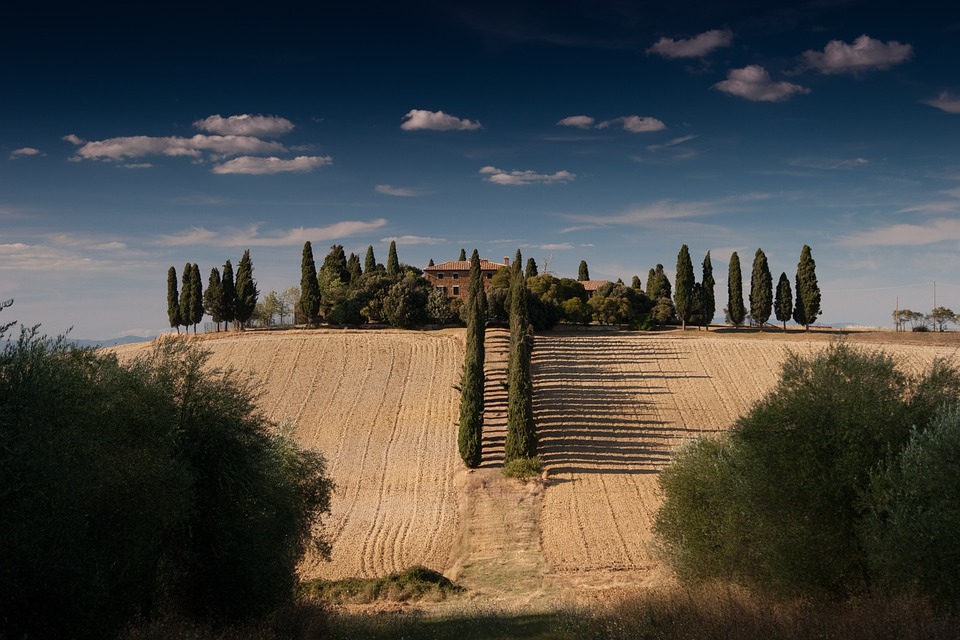
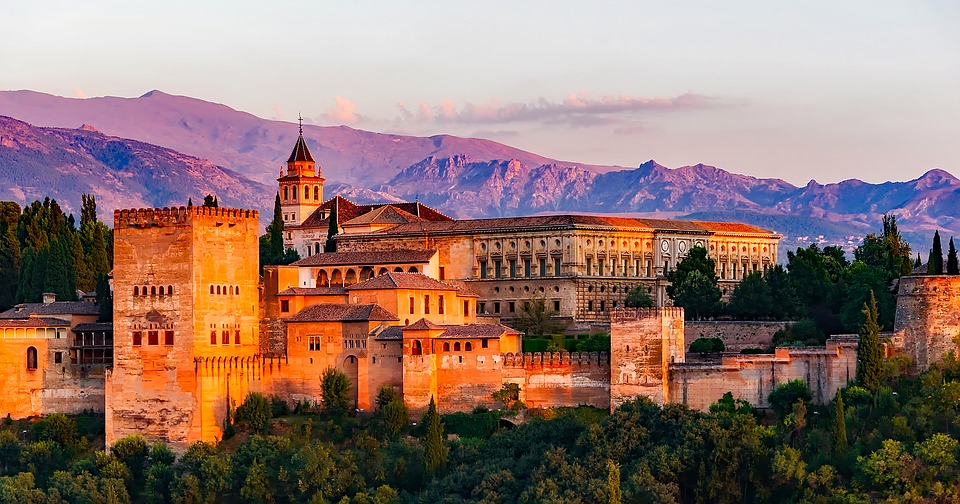
Capital of Spain: Madrid
Population (Estimated July 2012): 47,042,984
Area: 505,991km2 or 195,364mi2
Currency: Euro (€)
Official Language: Castilian Spanish
Political Information: Parliamentary Monarchy
Official Religion: No Official Religion
(approximately 94% of the population is Roman Catholic and 6% have other religious beliefs)
Highest Mountain: Pico de Teide (in the Canary Islands) at 3,718m or 12,
GDP Official Exchange Rate (OER is more precise at gauging a countries economic power)
(Estimated 2011): $1.494 trillion (US$) or (GBP)
GDP (OER) Per Capita (per member of the population estimated 2011): (US$) or (GBP)
GDP Purchasing Power Parity (PPP is good for gauging living conditions and use of resources but not as accurate as OER. This data has been calculated based on the sum value of all goods and services produced in the country valued at prices prevailing in the United States)
(Estimated 2011): $1.432 trillion (US$) or (GBP)
GDP (PPP) Per Capita (per member of the population estimated 2011): $31,000 (US$) or (GBP)
Time Zone (GMT/UTC): GMT
Counties/Provinces/States: 17 autonomous communities (comunidades autonomas, singular – comunidad autonoma) and 2 autonomous cities* (ciudades autonomas, singular – ciudad autonoma); Andalucia, Aragon, Asturias, Baleares (Balearic Islands), Ceuta*, Canarias (Canary Islands), Cantabria, Castilla-La Mancha, Castilla y Leon, Cataluna (Catalonia), Comunidad Valenciana (Valencian Community), Extremadura, Galicia, La Rioja, Madrid, Melilla*, Murcia, Navarra, Pais Vasco (Basque Country)
Leaders: King FELIPE VI (since 19 June 2014); Heir Apparent Princess LEONOR, Princess of Asturias, daughter of the monarch (born 31 October 2005) with President (Prime Minister) Mariano Rajoy.
Sources: CIA World Fact Book, Encyclopaedia Britannica.
Spain
Spain, a vibrant nation located on the Iberian Peninsula, is renowned for its rich tapestry of history, culture, and diversity. It is bordered by France to the north and Portugal to the west, with the Mediterranean Sea gracing its eastern and southern coasts. The country boasts a population of approximately 47 million people, making it one of the most populous countries in Europe.
Spain’s unique blend of regional identities, languages, and traditions contributes to its allure as a travel destination and a cultural hub. From the sun-drenched beaches of Costa del Sol to the snow-capped peaks of the Pyrenees, Spain offers a myriad of landscapes that reflect its geographical diversity. The Spanish language, or Castilian, is one of the most widely spoken languages in the world, serving as a unifying thread among its diverse regions.
However, Spain is also home to several co-official languages, including Catalan, Galician, and Basque, each representing distinct cultural identities.
As one delves deeper into Spain’s multifaceted identity, it becomes evident that the nation is not merely a geographical entity but a vibrant mosaic of traditions, customs, and artistic expressions.
Summary
- Spain is a diverse and vibrant country located in the Iberian Peninsula in Europe, known for its rich history, culture, and stunning landscapes.
- The history and culture of Spain is influenced by its past as a powerful empire, with a mix of Roman, Moorish, and Christian traditions shaping its art, architecture, and way of life.
- Spain’s geography varies from lush green landscapes in the north to arid plains in the south, with a Mediterranean climate bringing hot summers and mild winters to most of the country.
- Famous landmarks and attractions in Spain include the Sagrada Familia in Barcelona, the Alhambra in Granada, and the Prado Museum in Madrid, showcasing the country’s artistic and architectural prowess.
- Spanish cuisine is renowned for its use of fresh ingredients, with dishes like paella, tapas, and churros reflecting the country’s culinary traditions, while festivals like La Tomatina and Semana Santa showcase the lively spirit of the Spanish people.
History and Culture of Spain
Early Influences and Roman Conquest
The Roman Empire’s conquest of the region in the 2nd century BCE brought about significant changes in governance, infrastructure, and culture. The remnants of Roman architecture, such as aqueducts and amphitheatres, can still be seen in cities like Segovia and Mérida.
The Rise and Fall of Kingdoms
The fall of the Western Roman Empire in the 5th century led to the rise of various Germanic tribes, notably the Visigoths, who established a kingdom that lasted until the Muslim conquest in 711 CE. The subsequent period of Al-Andalus saw a flourishing of science, philosophy, and the arts under Muslim rule.
A Golden Age of Discovery
This era was characterised by remarkable advancements in mathematics, astronomy, and medicine, as well as the construction of stunning architectural marvels like the Alhambra in Granada. The Reconquista, a centuries-long effort to reclaim territory from Muslim rule, culminated in 1492 with the capture of Granada by Catholic Monarchs Ferdinand and Isabella.
Emergence as a Global Power
This pivotal moment not only marked the end of Muslim rule but also set the stage for Spain’s emergence as a global power during the Age of Exploration.
Geography and Climate of Spain
Spain’s geography is as diverse as its culture, featuring a variety of landscapes that range from rugged mountains to expansive plains and picturesque coastlines. The country is home to several mountain ranges, including the Pyrenees in the north and the Sierra Nevada in the south. These mountains not only provide breathtaking views but also serve as natural barriers that have historically influenced trade routes and cultural exchanges.
The central plateau, known as La Mancha, is characterised by its arid climate and vast agricultural fields, while the coastal regions boast lush vegetation and fertile soils. The climate in Spain varies significantly from region to region. The northern regions experience a temperate maritime climate with mild summers and cool winters, while areas in the south enjoy a Mediterranean climate characterised by hot summers and mild winters.
The interior regions can experience extreme temperatures, with scorching summers and frigid winters. This climatic diversity has allowed for a wide range of agricultural products to flourish across the country, from olives and grapes to citrus fruits and vegetables. The interplay between geography and climate has not only shaped Spain’s economy but has also influenced its culinary traditions and lifestyle.
Famous Landmarks and Attractions in Spain
Spain is replete with iconic landmarks that reflect its rich history and architectural prowess. One of the most famous is the Sagrada Família in Barcelona, an extraordinary basilica designed by architect Antoni Gaudí. Construction began in 1882 and continues to this day, with Gaudí’s unique vision blending Gothic and Art Nouveau styles.
The intricate facades and towering spires make it a UNESCO World Heritage Site and a symbol of Catalan modernism. Another remarkable site is the Alhambra in Granada, an exquisite example of Moorish architecture that showcases intricate tile work, lush gardens, and stunning courtyards. Originally built as a fortress in the 9th century, it later became a royal palace for Muslim rulers.
The Alhambra’s beauty lies not only in its architectural details but also in its historical significance as a testament to Spain’s multicultural past. Other notable landmarks include the historic city of Toledo, known for its medieval architecture; the Roman aqueduct in Segovia; and the stunning beaches along the Costa Brava.
Spanish Cuisine and Culinary Traditions
Spanish cuisine is a reflection of its diverse regions and rich agricultural heritage. Renowned for its bold flavours and fresh ingredients, Spanish food varies significantly from one region to another. In Andalusia, for instance, tapas are a culinary staple; these small dishes are perfect for sharing and often feature ingredients like olives, cured meats, seafood, and cheeses.
The tradition of tapas encourages social interaction and embodies the Spanish way of life—enjoying food with family and friends. Paella is perhaps one of Spain’s most famous dishes, originating from Valencia. This saffron-infused rice dish can be made with various ingredients such as chicken, rabbit, seafood, or vegetables.
Each region has its own take on paella, showcasing local produce and culinary techniques. Additionally, Spain is known for its exceptional wines, particularly those from regions like Rioja and Ribera del Duero. The country’s commitment to quality ingredients extends to its olive oil production; Spain is one of the largest producers of olive oil globally, with Andalusia being at the forefront.
Festivals and Celebrations in Spain
Festivals of Fun and Food
One of the most famous is La Tomatina, held annually in Buñol. This unique festival involves participants throwing tomatoes at each other in a spirited food fight that attracts thousands of visitors from around the world.
A Celebration of Faith and Tradition
Originating in 1945 as a spontaneous event among locals, La Tomatina has evolved into a major tourist attraction that embodies Spain’s playful spirit. Another significant celebration is Semana Santa (Holy Week), observed throughout Spain but particularly prominent in Seville. This religious festival features elaborate processions with ornate floats depicting scenes from Christ’s Passion.
A Showcase of Regional Customs
Participants dressed in traditional robes march through the streets accompanied by music and incense, creating an atmosphere of reverence and reflection. Each region has its own unique customs associated with Semana Santa, showcasing local artistry and devotion.
Spanish Art and Architecture
Spain has produced some of history’s most influential artists whose works have left an indelible mark on global art movements. The Golden Age saw luminaries such as Diego Velázquez and Francisco Goya emerge as masters of their craft. Velázquez’s masterpiece “Las Meninas” remains one of art history’s most studied paintings due to its complex composition and innovative use of perspective.
Goya’s works often reflected social commentary through haunting imagery that captured the tumultuous nature of his time. In addition to painting, Spanish architecture has evolved through various styles influenced by historical events. The Gothic cathedrals scattered across the country exemplify medieval craftsmanship while modernist architecture flourished in cities like Barcelona under Gaudí’s influence.
His works such as Casa Batlló and Park Güell showcase organic forms and vibrant colours that challenge conventional architectural norms. The juxtaposition of historical styles with contemporary designs creates a dynamic urban landscape that reflects Spain’s artistic evolution.
Modern Day Spain and its Economy
In contemporary times, Spain stands as a significant player within the European Union with a diverse economy that encompasses various sectors including tourism, agriculture, manufacturing, and services. Tourism plays a pivotal role in Spain’s economy; millions flock to its shores each year to experience its rich culture, historical landmarks, and culinary delights.
Agriculture remains vital to Spain’s economy as well; it is one of Europe’s leading producers of fruits and vegetables thanks to its favourable climate conditions. The country is renowned for its olive oil production—an essential component of Mediterranean cuisine—and wine production which has gained international acclaim. Additionally, Spain has made strides in renewable energy sources such as wind power; it ranks among the top countries globally for wind energy production.
Spain’s economy has faced challenges in recent years due to economic downturns; however, it has shown resilience through reforms aimed at boosting competitiveness and innovation. As it navigates through these complexities while embracing its rich heritage and cultural diversity, modern-day Spain continues to captivate both residents and visitors alike with its unique blend of tradition and progress.
FAQs
What is the capital of Spain?
The capital of Spain is Madrid.
What is the official language of Spain?
The official language of Spain is Spanish, also known as Castilian.
What is the currency used in Spain?
The currency used in Spain is the Euro (€).
What is the population of Spain?
As of 2021, the population of Spain is approximately 47 million people.
What are some popular tourist attractions in Spain?
Some popular tourist attractions in Spain include the Sagrada Familia in Barcelona, the Alhambra in Granada, the Prado Museum in Madrid, and the La Rambla in Barcelona.
What is the climate like in Spain?
Spain has a diverse climate, with Mediterranean climate in the south and east, and oceanic climate in the north. The interior of the country experiences a continental climate with hot summers and cold winters.
What are some traditional Spanish dishes?
Some traditional Spanish dishes include paella, gazpacho, tortilla española, and churros.
What are some famous festivals in Spain?
Some famous festivals in Spain include La Tomatina in Buñol, the Running of the Bulls in Pamplona, and the Feria de Abril in Seville.
Political Boundaries of Spain: Provinces, Districts, or Historical Boundaries.
Political boundaries serve as the framework within which a nation operates, delineating areas of governance, cultural identity, and social interaction. In Spain, these boundaries are not merely lines on a map; they represent a complex interplay of history, culture, and politics that has evolved over centuries. The country is characterised by its rich tapestry of regional identities, each with its own distinct traditions, languages, and historical narratives. Understanding the political boundaries of Spain requires an exploration of its provinces, districts, and the historical context that has shaped these divisions. Spain’s political landscape is marked by a unique blend of centralisation and regional autonomy. The Spanish Constitution of 1978 established a framework for decentralised governance, allowing for the creation of autonomous communities. This shift was pivotal in addressing the diverse needs and aspirations of various regions, particularly those with strong cultural identities such as Catalonia and the Basque Country. As a result, the political boundaries in Spain are not static; they are dynamic entities that reflect ongoing negotiations between national unity and regional self-determination. Summary Spain is divided into 17 autonomous communities, each with its own political boundaries and administrative divisions. Provinces are the primary administrative divisions in Spain, responsible for local governance and public services. Districts are smaller local government areas within provinces, playing a key role in delivering public services and representing local interests. Historical boundaries in Spain are influenced by cultural, linguistic, and geographic factors, shaping the country’s diverse regional identities. The evolution of political boundaries in Spain reflects the country’s complex history, including periods of conquest, unification, and decentralization. Provinces: Administrative Divisions in Spain Spain is...
Climate Zones of Spain: Different climate regions Of Spain
Spain, a country renowned for its rich cultural heritage and diverse landscapes, is equally notable for its varied climate zones. The geographical positioning of Spain, coupled with its topographical features, creates a mosaic of climatic conditions that range from the arid to the temperate. This climatic diversity is not merely a backdrop to the country’s vibrant lifestyle; it significantly influences agriculture, tourism, and even the daily lives of its inhabitants. Understanding these climate zones is essential for appreciating the ecological and cultural richness of Spain. The climate of Spain can be broadly categorised into several distinct regions, each characterised by unique weather patterns and environmental conditions. These zones include the Mediterranean, Continental, Oceanic, Semi-arid, Mountain, and Canary Islands climates. Each region presents its own set of characteristics that affect everything from the types of crops that can be grown to the kinds of recreational activities that are popular among locals and tourists alike. This article delves into each of these climate zones, exploring their defining features and the implications they have on life in Spain. Summary Spain has a diverse range of climate zones, influenced by its geographical location and varied topography. The Mediterranean climate region in Spain is characterized by hot, dry summers and mild, wet winters, making it ideal for agriculture and tourism. The continental climate region experiences hot summers and cold winters, with significant temperature variations throughout the year. The oceanic climate region is found in the northern part of Spain and is known for its mild temperatures, high rainfall, and lush green landscapes. The semi-arid climate region in southeastern Spain has hot, dry summers and...
Terrain and Topography of Spain: mountains, valleys, and plains.
Spain, a country renowned for its rich cultural heritage and historical significance, is equally celebrated for its diverse terrain and topography. Stretching across the Iberian Peninsula, Spain‘s landscape is a tapestry woven from mountains, valleys, plains, and coastal regions, each contributing to the country’s unique geographical identity. The varied topography not only shapes the natural beauty of the land but also influences the climate, biodiversity, and human activities within its borders. From the rugged peaks of the Pyrenees to the sun-kissed beaches of the Mediterranean, Spain’s terrain is a reflection of its geological history and climatic variations. The geographical diversity of Spain can be attributed to its complex geological formation, which includes ancient mountain ranges, river systems, and coastal areas. The country is bordered by the Atlantic Ocean to the northwest and the Mediterranean Sea to the southeast, creating a variety of microclimates that further enhance its ecological richness. This intricate interplay of landforms and climates has resulted in a multitude of ecosystems, making Spain one of the most biodiverse countries in Europe. Understanding Spain’s terrain is essential for appreciating its natural beauty and the myriad ways in which it has shaped human life throughout history. Summary Spain’s terrain is diverse, ranging from mountains and valleys to vast plains. The majestic mountains of Spain, such as the Pyrenees and Sierra Nevada, offer stunning landscapes and outdoor activities. The beautiful valleys of Spain, like the Ebro Valley and Guadalquivir Valley, are rich in agriculture and natural beauty. The vast and diverse plains of Spain, including the Meseta Central, play a crucial role in the country’s agriculture and economy. Spain’s varied...
Cultural or Historical Sites of Spain: Important Cultural Landmarks or Historical Sites In Spain
Spain is a country steeped in a rich tapestry of history and culture, where the echoes of its diverse past resonate through its architectural marvels and historical landmarks. From the ancient ruins of Roman settlements to the intricate designs of Moorish palaces, Spain‘s cultural heritage is a reflection of the myriad influences that have shaped its identity over centuries. The nation boasts an impressive array of UNESCO World Heritage Sites, each telling a unique story that contributes to the broader narrative of Spanish history. Visitors to Spain are often captivated by the juxtaposition of its vibrant traditions and modern life, making it a fascinating destination for those interested in exploring the depths of its cultural and historical significance. The allure of Spain’s historical sites lies not only in their aesthetic beauty but also in the stories they tell about the people who built them and the eras they represent. Each monument serves as a testament to the artistic, architectural, and social advancements of its time. From the grandeur of royal palaces to the simplicity of ancient churches, these sites offer a glimpse into the lives of those who came before us. As we delve into some of Spain’s most iconic cultural landmarks, we will uncover the layers of history that have shaped this remarkable nation, revealing how its past continues to influence its present. Summary Spain is home to a rich cultural and historical heritage, with a diverse range of iconic sites that showcase its unique history and influence. The Alhambra stands as a symbol of Spain’s Islamic heritage, with its stunning architecture and intricate designs that reflect the...
Natural Resources of Spain: Where Natural Resources are Located in Spain
Spain, a country renowned for its rich cultural heritage and diverse landscapes, is equally blessed with an array of natural resources that play a pivotal role in its economy and the livelihoods of its citizens. The geographical diversity of Spain, which ranges from the mountainous regions of the Pyrenees to the sun-kissed beaches of the Mediterranean, contributes to a wealth of natural resources. These resources are not only vital for domestic consumption but also for export, making Spain a significant player in various global markets. The interplay between Spain’s natural resources and its economic activities underscores the importance of sustainable management practices to ensure that these assets can be preserved for future generations. The significance of Spain’s natural resources extends beyond mere economic value; they are integral to the cultural identity and social fabric of the nation. From the agricultural traditions that have shaped rural communities to the mineral wealth that has driven industrial growth, these resources have influenced the historical trajectory of Spain. As the country navigates contemporary challenges such as climate change and resource depletion, understanding and managing these natural assets becomes increasingly crucial. This article delves into the various categories of natural resources found in Spain, exploring their characteristics, uses, and the challenges associated with their management. Summary Spain is rich in natural resources, including minerals, agriculture, water, forestry, energy, and fishing resources. Spain is a leading producer of gypsum, salt, and marble, and has significant reserves of coal, iron, and copper. The country’s diverse climate and fertile soil support the production of a wide variety of crops, including olives, grapes, and citrus fruits. Spain’s rivers...
History of Spain
The history of Spain can be traced back to prehistoric times, when the Iberian Peninsula was inhabited by various groups of early humans. Evidence of these early inhabitants has been uncovered in numerous archaeological sites, with some of the most significant findings located in the caves of Altamira in Cantabria. The cave paintings, which date back to around 36,000 years ago, depict a variety of animals, including bison and deer, showcasing the artistic capabilities of these early peoples. These artworks not only provide insight into the lives and beliefs of prehistoric communities but also highlight their deep connection to the natural world. In addition to the famous cave paintings, other archaeological discoveries have revealed the presence of Neanderthals and early Homo sapiens in the region. Sites such as the Sima de los Huesos in Atapuerca have yielded a wealth of fossilised remains, indicating that these early inhabitants engaged in complex social behaviours and possibly even ritualistic practices. The transition from nomadic hunter-gatherer societies to settled agricultural communities marked a significant turning point in...
Population Density of Spain
Population density is a critical demographic metric that reflects the number of individuals living per unit area, typically expressed in persons per square kilometre. In Spain, this figure varies significantly across different regions, influenced by a multitude of factors including geography, climate, economic opportunities, and historical development. As of the latest census data, Spain has an average population density of approximately 93 inhabitants per square kilometre. However, this average masks considerable disparities; urban centres such as Madrid and Barcelona exhibit densities that far exceed this national average, while vast rural areas in regions like Extremadura and Castilla-La Mancha remain sparsely populated. Understanding population density in Spain is essential for grasping the socio-economic dynamics at play within the country. High-density areas often experience unique challenges and opportunities that can shape local policies and community life. Conversely, regions with low population density may struggle with issues such as economic stagnation and inadequate public services. This article delves into the various factors influencing population density in Spain, the distribution of populations across urban and rural landscapes, and the implications of these patterns for infrastructure, resources, and government policy. Summary Spain has a population density of 92.8 people per square kilometre, with the highest density in urban areas. Factors influencing population density in Spain include economic opportunities, climate, and historical settlement patterns. The majority of Spain’s population is concentrated in urban areas, with rural areas experiencing depopulation. Population density varies across different regions of Spain, with the highest density in the Madrid and Barcelona metropolitan areas. High population density in Spain puts pressure on infrastructure and resources, leading to challenges in housing, transportation,...
Discover the Charms of Spain: A Journey Through Its Vibrant Culture and Stunning Landscapes
Spain, located in southwestern Europe, is a country known for its diverse landscapes, rich history, and vibrant culture. It is bordered by Portugal to the west, France to the northeast, and the Mediterranean Sea to the south and east. The country is divided into 17 autonomous regions, each with its own distinct culture and traditions. Spain has a long and complex history that dates back thousands of years. It was once home to various ancient civilizations, including the Celts, Iberians, and Romans. In the 8th century, the Moors from North Africa invaded Spain and established the Islamic Caliphate of Cordoba. This period of Moorish rule had a significant impact on Spanish culture and architecture. Spain played a crucial role in European and world history. It was a dominant global power during the 16th and 17th centuries, with vast territories in the Americas, Asia, and Africa. The Spanish Empire brought immense wealth to the country through trade and exploration. However, Spain also experienced periods of decline and political instability in the following centuries. Summary Spain is a diverse country with a rich history and vibrant culture. The artistic heritage of Spain is vast, from Gaudi to Picasso. Spain boasts natural wonders such as mountains, beaches, and national parks. The Spanish way of life includes siestas, tapas, and flamenco. Iconic Spanish cities include Madrid, Barcelona, Seville, and Granada. Exploring the Vibrant Culture of Spain: Food, Music, and Festivals Spanish cuisine is renowned worldwide for its bold flavors and diverse ingredients. Tapas, small plates of food meant to be shared, are a staple of Spanish dining. They can range from simple dishes...


